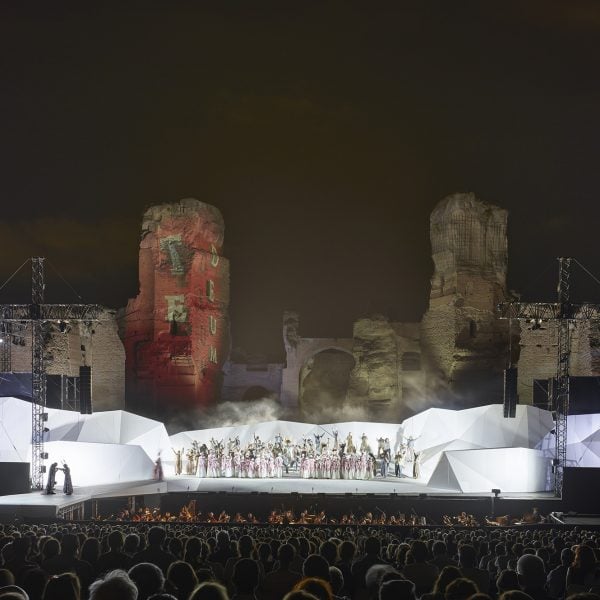Promotion: Italian architecture firm Studio Fuksas has made its operatic debut with open-air productions of Tosca and Turandot, for which the company designed an all-white set in front of Rome’s ancient Baths of Caracalla.
Doriana and Massimiliano Fuksas’s stage design constituted a key venue for the 2024 Caracalla Festival and offered a unified vision for both operas, which were programmed together to honour the centenary of the death of their composer, Giacomo Puccini.
The design was intended to create a visual dialogue with the dramatic ruins of the Baths of Caracalla, one of Rome’s largest ancient baths, by contrasting the ancient and the contemporary.
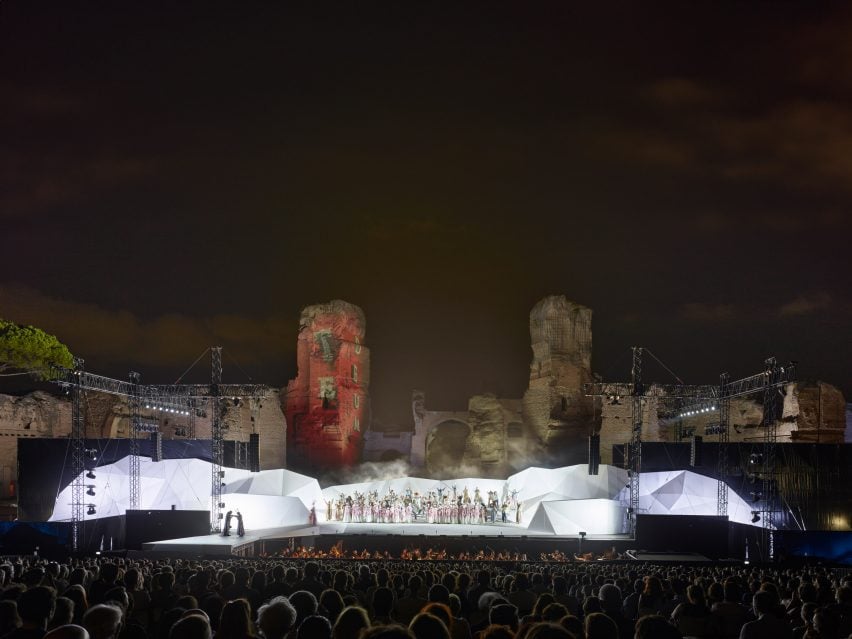
It featured an 88-metre-long stage composed of angular white planes, like a crisply folded piece of white paper, with a layered configuration that placed performers at multiple heights.
The set was modular, with a removable central section, and enhanced with a lighting and projection design that added dynamism.
The Fuksases’ key goal for the set, lighting and projection design was to amplify the emotional intensity of the operas and to bring attention to the performers.
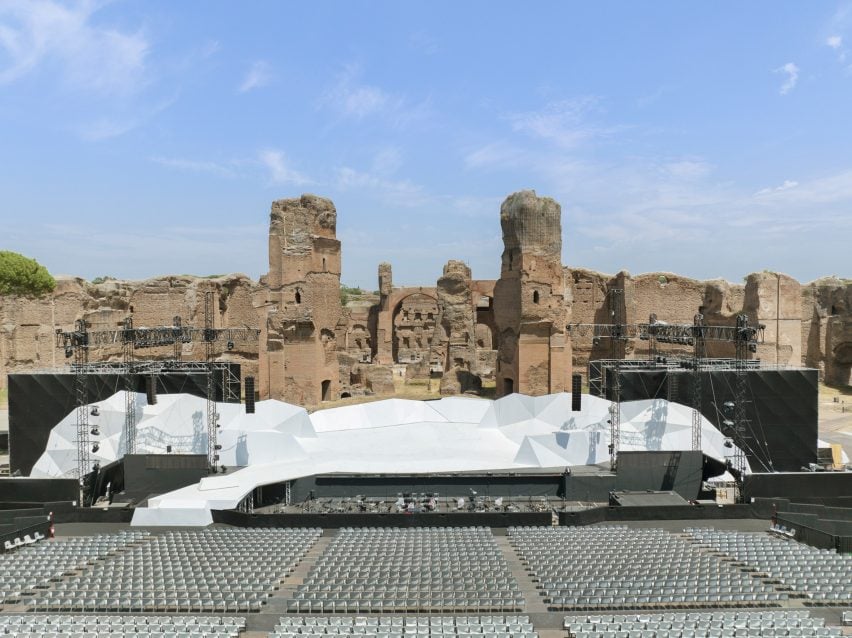
“The stage is white to give strength to the characters,” said Doriana Mandrelli Fuksas.
“We didn’t want to challenge the monumentality of the site,” she continued, “but instead create a fluid space, somewhere between a cloud and an iceberg, where the characters could emerge.”
The architects also wanted a stark set to emphasise a theme that resonated with them deeply from the operas – that of the struggles facing women across the world.
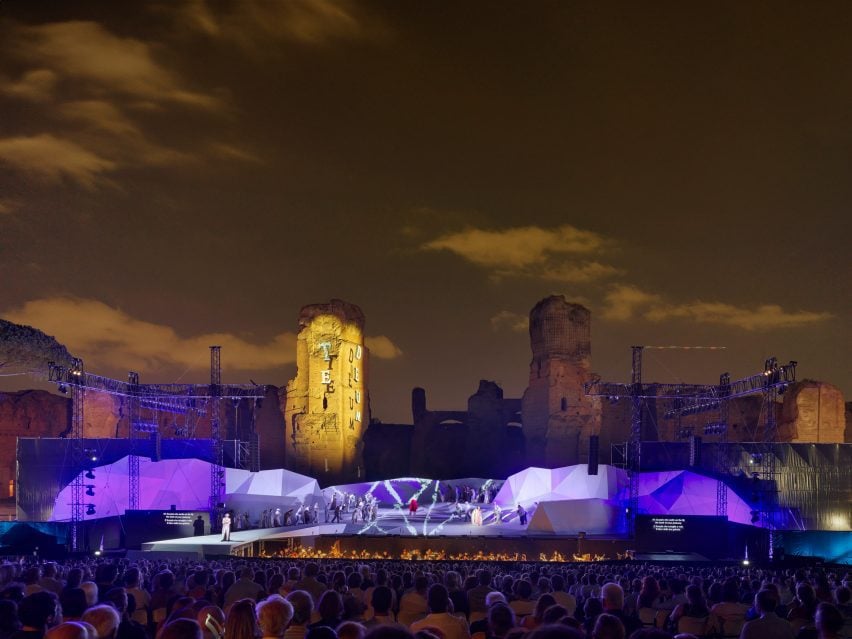
While the images cast by the projections sometimes create a fantastical feel, the Fuksases also wanted there to be more confronting moments.
“Tosca in the Third Millennium is no longer just a melodrama but a representation of the true contemporary drama — the harsh reality of women’s conditions in today’s world, marked by femicides and violence,” said Studio Fuksas.
Puccini’s Tosca is set in Rome in 1800, when Napoleon’s forces were advancing on the city. Tosca is manipulated by a sadistic police chief who desires her, and the opera also contains scenes of torture, murder and suicide.
Turandot, meanwhile, is set in China and revolves around a princess being forced into a marriage she does not want.
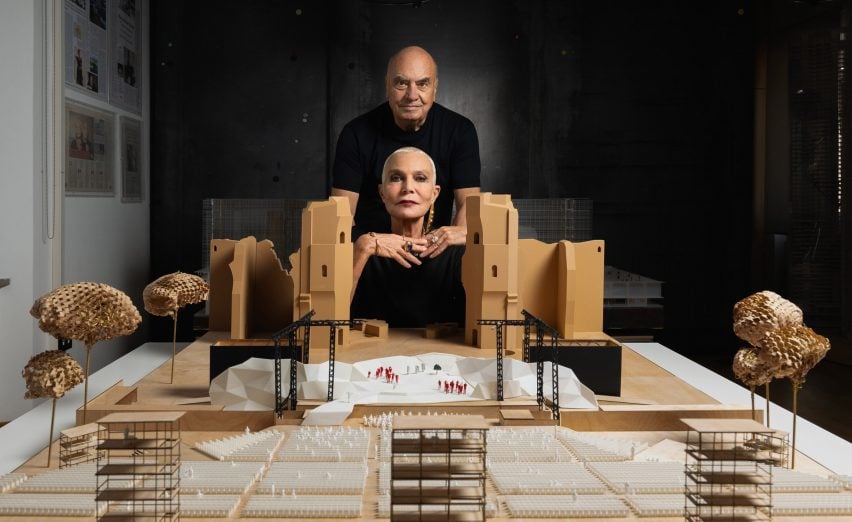
The projections designed for the operas were abstract but intended to evoke iconic Roman landmarks such as Palazzo Farnese and Castel Sant’Angelo in Tosca, and for Turandot, its setting in China.
Studio Fuksas has previously designed open-air sets for theatrical productions of Medea and Oedipus, but the Caracalla Festival marked the practice’s first foray into opera. The festival ran from 3 June to 10 August.
Studio Fuksas has offices in Rome, Paris and Shenzhen. Its previous projects include a Terminal 3 at Shenzhen Bao’an International Airport in China, the Rhike Park Music Theatre and Exhibition Hall in Georgia, and the New Rome/EUR Convention Hall and Hotel in Italy.
For more information on Studio Fuksas, visit its website.
Partnership content
This article was written by Dezeen for Studio Fuksas as part of a partnership. Find out more about Dezeen partnership content here.

